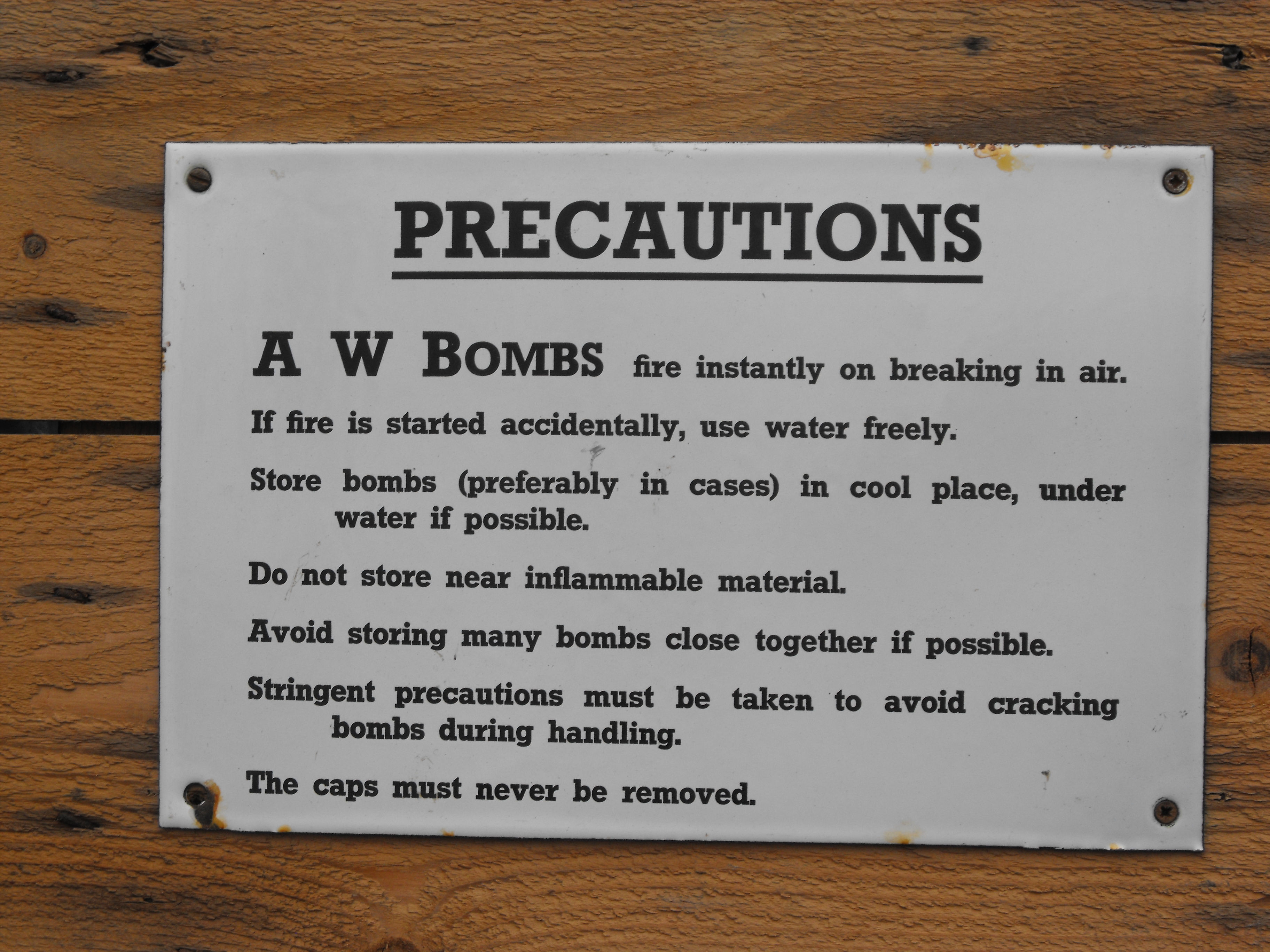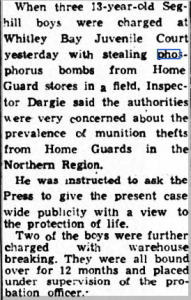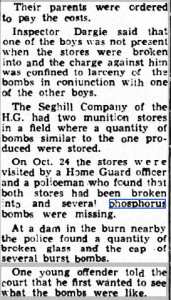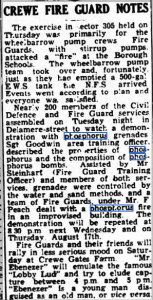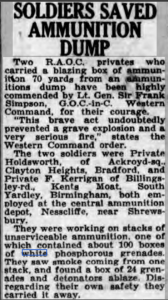I have looked extensively at the production, use and ultimate abandonment of these useless but highly dangerous white phosphorus filled half pint milk bottles, manufactured by Albright and Wilson on behalf of The British Government during The Second World War for an anti-tank guerrilla warfare campaign that never transpired. Over seven million of them were produced between 1940-42 at Oldbury and satellite factories , and then dispatched to Home Guard units around the country in wooden boxes of 24.
All came with clear instructions for use, and some later designs were made to be fired from a gun known as the Northover projector. Many were used for demonstrations and training, but by 1943 it was clear that they were useless for anything but gathering dust.
Many had been buried under water or in back gardens, and then as time passed by, so people forgot like absent minded squirrels as to where they had buried them.
It is widely believed that many ended up destroyed at Rattlechain lagoon before AW became a private limited company, conveniently operating the site as a Government contractor for the ministry of supply before their own waste stream went into the drink.
I have found more evidence of the problems that these dangerous and useless artefacts caused the authorities from newspaper archives, when it had obviously become clear by 1942 when their manufacture ceased that there was no use for them. The issues appear to be twofold.
- There was no real plan as to how to destroy them and they had been stashed away, often found by children.
- Even bigger “kids” used them in “demonstrations” for fire guard training.
The 4th November Blyth News from 1943 tells how some schoolboys had half-inched the half pint bottles from the Home Guard stores and were before the beak for doing so. It wasn’t quickly apparent that they had even been stolen, but it appears they had been dumped into the environment before they were missing. This method of secreting them under water would become a common theme in later years 😥
A year later from the 5th August Crew Chronicle, we see how these devices were now not being used for anything other than starting fires, rather than destroying tanks, and were becoming the play thing of the Home Guard rivals, The Fire Guard. They were aware of the properties of phosphorus and how to fight such fires, but I don’t think that AW or those who toiled on their dangerous manufacture would have believed that they would have been used in such a blasé way.
Post war, as we know, AW bombs gave the authorities considerable headaches when it was seen repeatedly that the Home Guard had abandoned their weapons before stand down. The 27 May 1950 Gloucester Citizen reported how two soldiers from The Royal Army Ordnance Corps carried AW bombs that had caught fire at an ammunition dump that appears to have been in the process of decommissioning in the Midlands area. 100 boxes of AW bombs would be 240 phosphorus filled grenades, and so there is no doubt that these “unserviceable ammunition” could have caused a serious loss of life if coming into contact with other explosive devices. It isn’t clear if they had been disturbed and the bottles broken, or if they had just corroded and auto ignited on contact with air. Either way, it is clear that storing large numbers of bombs together was a very dangerous practice in confined internal conditions.
Though these weapons may have been haphazardly processed, it was obvious 11 years after the war had ended that AW bombs amongst other things were now a serious risk to the public The Stamford Mercury of 20th July 1956 published a letter from a Chief Constable. He was concerned as to how these “extremely dangerous” contraband weapons could fall into the hands of criminals and children. He was offering an amnesty as to their surrender , but I wonder how many of the absent minded Home Guard could even remember where they had dumped them after this time?
It was pretty clear that discussions must have taken place with the manufacturer of these weapons in dealing with such incidents at a centrally located dump not far from the factory where they had been made.


